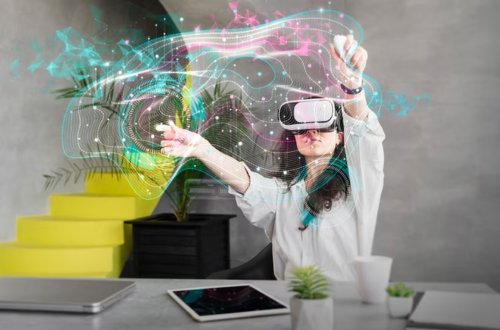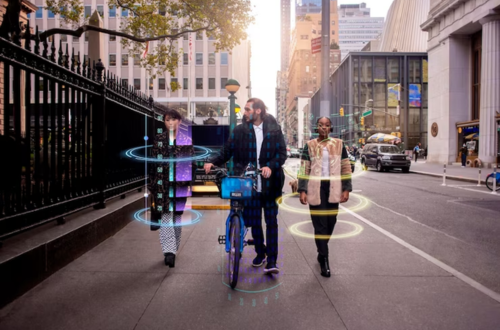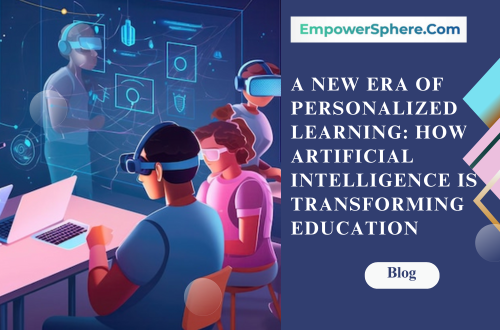In the constantly changing world of education, getting truly personalized learning has been hard for a long time. Teachers often have trouble meeting the different learning goals of their students because they have limited means and have to follow a standard curriculum. But as technology, especially artificial intelligence (AI), gets better, a new age of personalized learning is just around the corner. This paradigm shift could change education in a way that makes it more interesting, effective, and useful for students.
The Evolution of Personalized Learning
Personalized learning is about making sure that each student gets an education that fits their needs, abilities and hobbies. While there are tools for adapting a course’s structure to the needs of individual students, tailoring the courses themselves has proven more difficult. Creating multiple variations of the same lesson for each student is simply not feasible for curriculum developers. As a result, content that aims to work for everyone ends up being personalized for no one.
Each student in a classroom is unique, with different passions and interests. Some may be sports fanatics, while others aspire to be musicians or have a deep love for animals. Imagine a world where educators are able to tailor lessons to their pupils’ current areas of interest. With the development of AI, this is becoming more than a pipe dream.
The Power of Choice Texts: A Playful Revolution
One example of the future of personalized learning is a new reading tool called Choice Texts, developed by eSpark, an online math and reading program for students in grades K-5. Choice Texts utilizes AI to create custom reading passages and comprehension questions for each student based on their own choices and interests.
The goal is to create a playfully personalized and engaging experience for every student, even those who may be reluctant readers. This raises an important question: what if students who claim they don’t enjoy reading simply haven’t found the right topics to read about yet?

Choice Texts allows students to choose their own characters and other story elements when creating a customized reading passage. This level of personalization empowers students and increases their engagement with the material.
Amy Lower, an experienced teacher at Stinson Elementary in Northwest Local Schools, Ohio, shares her excitement about this tool and the impact it has had on her fifth-grade ELA students. She notes that the students are more invested in reading right from the beginning, leading to increased engagement and enthusiasm.
Lower recounts one student asking, “Can I get my journal out and write about this?”—a testament to the transformational power of personalized learning.
The Impact on Learning Outcomes
When playful personalization is integrated into the classroom, the impact on student learning is profound. Students who may have previously identified as reluctant readers discover that reading can be a fun and enjoyable experience.
Their outlook on learning shifts, and they become more receptive to the educational content presented to them. Ms. Lower attests to this transformation, stating that using eSpark has enhanced the reading experience for her students. In conjunction with their existing reading materials, eSpark provides additional support and correlates well with assessments such as NWEA’s MAP Growth.
Lower proudly shares that her students mastered over 960 lessons in ELA alone, with a 30% increase in progress from the beginning to the end of the year.
There is a strong correlation between personalized learning, student engagement, and improved outcomes. Engaged students are more likely to absorb and retain information, as confirmed by a 2017 Gallup Poll. Student choice is a powerful motivator throughout the school day, and the potential of generative AI makes the dream of a student-centered, choice-driven classroom more attainable than ever before.
How to Embrace Playful Personalization
While artificial intelligence will play a significant role in personalizing classroom instruction, it is still a relatively new technology. Activities like eSpark’s Choice Texts offer a safe, secure, and accessible way for teachers to introduce some of the benefits of AI into their classrooms without taking undue risks.

Ms. Lower advises educators to dive in and embrace new practices, not being afraid to make adjustments along the way. Involving students in the process and seeking their feedback helps to ensure that the tools being used effectively support the learning goals. Regular class meetings can provide valuable insights into how well the tools are enhancing the educational experience.
As AI keeps getting better, so will its use in schools. Teachers must stay up-to-date and give their students the skills they need to achieve in a world that changes quickly. Lower stress on how important it is to accept AI and know how to use it in a responsible way. By doing this, teachers are able to assist their students figure out how to use the digital tools and resources they have access to. This improves their general learning experience and gives them more choices and options.
Conclusion
Artificial intelligence is paving the way toward a time when learning will be tailored to each person. Through tools like eSpark’s Choice Texts, teachers can create a playfully personalized and engaging experience for their students. This approach not only increases student engagement but also improves learning outcomes. By embracing AI and understanding how to implement it responsibly, educators can prepare their students for success in a world driven by technology. The future of education is personalized, and with AI as a guiding force, the possibilities are endless.
FAQ’s
Q. 1. What is personalized learning in education?
In education, the term “personalized learning” refers to a way of teaching that makes sure each student’s goals, interests, and skills are met. Its goal is to make learning more interesting and effective by tailoring material, pace, and teaching methods to each student.
Q. 2. How does artificial intelligence (AI) contribute to personalized learning?
AI technology lets teachers look at how students learn, what they like, and how well they are doing. This information is used to create personalized learning experiences with content, tests, and tasks that match the learning styles and interests of each student.
Q. 3. What is the significance of AI in education?
AI could change education by giving teachers tools to make personalized learning paths, making students more interested in learning, and making learning results better. It makes it easier to analyze data, change how the material is delivered, and figure out where students might need more help.
Q. 4. What are the perks of AI-based personalized learning for people who are reluctant to read?
Choice Texts shows how AI and personalized learning can make reading more interesting for people who don’t like to read by letting them choose the characters and parts of the story that interest them. This makes them more interested in what they’re reading and can change how they feel about learning.
Q. 5. How does AI-enhanced personalized learning impact student engagement and outcomes?
Using AI to personalize games in the classroom gets students more involved, which makes learning more fun and effective. Students who are interested are more likely to remember what they learn, which leads to better learning outcomes and school success.
I am Charles Dickens, a strategic visionary in business management, driving growth and success through innovative strategies. As a content writer, I am known for my ability to craft compelling narratives that captivate audiences and convey complex ideas in an engaging manner.


